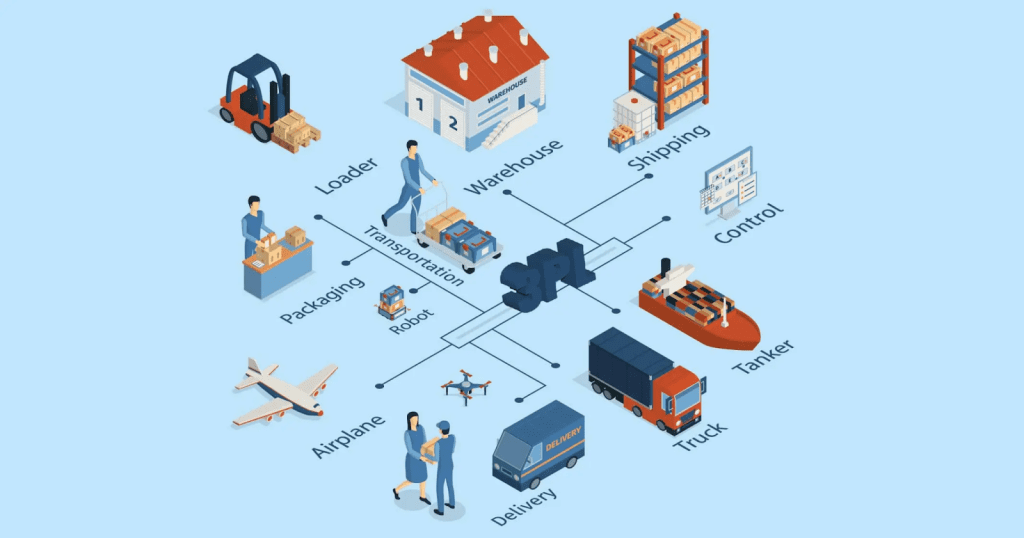In the ever-evolving landscape of global commerce, businesses are increasingly recognizing the significance of technology in optimizing their supply chain and logistics operations. The seamless integration of Warehouse Management System (WMS) with specialized Third-Party Logistics (3PL) software has emerged as a game-changer, providing a comprehensive solution to the complex challenges faced by modern businesses.
The Dynamic Landscape of Modern Supply Chains
The dynamics of supply chains have transformed dramatically over the years, driven by factors such as globalization, e-commerce proliferation, and heightened customer expectations. These changes have necessitated a shift from traditional, manually-managed warehouses to highly automated and technologically advanced systems.
As businesses expand their reach and diversify their product offerings, the need for efficient warehouse operations becomes paramount. WMS acts as the linchpin in this scenario, orchestrating various elements within a warehouse – from inventory tracking to order fulfillment – with precision and speed. Its role extends beyond the four walls of the warehouse, influencing the entire supply chain.
Navigating the Complexities of 3PL Operations
Third-Party Logistics providers play a vital role in this intricate web of supply chain operations. They serve as intermediaries, managing critical functions such as warehousing, transportation, and distribution on behalf of other businesses. The nature of 3PL operations introduces unique challenges that demand specialized solutions.
1. Multi-client Management:
3PL providers often find themselves handling the logistics needs of multiple clients concurrently. Each client may have distinct requirements, ranging from specific inventory storage conditions to unique order processing workflows. WMS integrated with 3PL software must seamlessly manage these diverse needs, ensuring that each client’s operations are isolated, secure, and aligned with agreed-upon service levels.
2. Real-time Visibility:
The hallmark of a successful 3PL operation lies in its ability to provide real-time visibility into inventory movements and order statuses. The integration of WMS and 3PL software facilitates this by offering a unified platform that enables both the 3PL provider and their clients to monitor, track, and manage inventory movements in real-time. This visibility fosters collaboration, reduces lead times, and enhances overall supply chain efficiency.
3. Scalability:
In the dynamic world of logistics, scalability is not a luxury but a necessity. The ability to adapt to fluctuating client volumes, seasonal demand variations, and unforeseen disruptions is critical for the success of a 3PL provider. The integrated WMS and 3PL software must be scalable, allowing for seamless adjustments to accommodate changing requirements without compromising performance.
4. Billing and Invoicing Capabilities:
3PL providers operate on a diverse range of billing models, including storage fees, order fulfillment charges, and transportation costs. The integration of robust billing and invoicing capabilities within the software ensures accurate and transparent financial transactions. Automation in billing not only reduces the likelihood of errors but also enhances the overall efficiency of financial processes, contributing to the financial health of the 3PL provider.
The Strategic Imperative of Technology Integration
The synergy between WMS and 3PL software goes beyond operational efficiency; it is a strategic imperative for businesses aiming to thrive in today’s competitive landscape. The integration of these technologies offers a holistic view of the supply chain, enabling data-driven decision-making and fostering a culture of continuous improvement.
1. Enhanced Collaboration:
Collaboration is at the core of successful 3PL relationships. The integrated solution allows seamless communication between the 3PL provider and their clients, facilitating real-time collaboration on inventory planning, order fulfillment, and distribution strategies. This enhanced collaboration minimizes misunderstandings, reduces lead times, and ultimately contributes to a more agile and responsive supply chain.
2. Data-Driven Decision-Making:
The integration of WMS and 3PL software generates a wealth of data regarding warehouse operations, inventory levels, and order processing timelines. Analyzing this data provides valuable insights that empower businesses to make informed decisions. From optimizing warehouse layouts to fine-tuning inventory management strategies, data-driven decision-making becomes a competitive advantage in a rapidly changing business environment.
3. Customer Satisfaction:
In an era where customer experience is a key differentiator, the integrated solution plays a crucial role in ensuring customer satisfaction. Real-time visibility into inventory levels, order statuses, and accurate delivery timelines enhances customer trust and loyalty. The transparency provided by the integrated system contributes to an improved overall customer experience, a critical factor for businesses looking to build lasting relationships with their clients.
Future Trends and Evolving Technologies
As technology continues to advance, the integration of WMS with 3PL software is poised to evolve further. Emerging technologies such as artificial intelligence (AI), machine learning (ML), and the Internet of Things (IoT) are gradually finding their way into logistics technology, promising even greater levels of automation, efficiency, and predictive capabilities.
1. AI and Predictive Analytics:
AI-driven algorithms are increasingly being utilized to predict demand patterns, optimize inventory levels, and enhance overall supply chain efficiency. The integration of AI into WMS and 3PL software enables proactive decision-making, reducing the impact of unforeseen disruptions and improving overall operational resilience.
2. Robotics and Automation:
The integration of robotics and automation into warehouse operations is a trend that is gaining momentum. Automated guided vehicles (AGVs), robotic pickers, and automated sorting systems are becoming integral components of modern warehouses. The synergy between WMS and 3PL software allows businesses to seamlessly integrate these technologies, further enhancing operational efficiency and reducing manual errors.
Conclusion
In conclusion, the integration of Warehouse Management Systems with specialized Third-Party Logistics software represents a paradigm shift in the way businesses approach supply chain management. The dynamic and interconnected nature of modern logistics demands a comprehensive solution that goes beyond basic inventory management. The strategic alignment of WMS and 3PL software not only addresses the unique challenges faced by 3PL providers but also positions businesses to thrive in an era where adaptability, collaboration, and technology-driven insights are the keys to success. As the logistics landscape continues to evolve, the symbiotic relationship between WMS and 3PL software will undoubtedly remain at the forefront of innovation, shaping the future of efficient and resilient supply chain operations.



